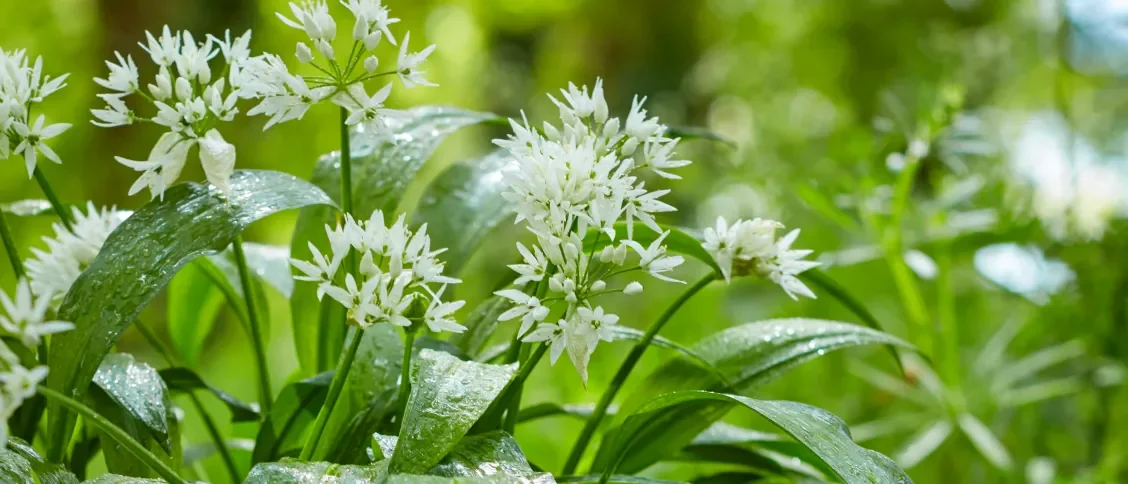
What is Foraging? Foraging for Beginners
Foraging is the act of gathering wild food for free. Now, it’s a great way to get outdoors and enjoy nature, with the added bonus of returning home with a basket full of tasty, free ingredients, but there was a time when all of our food was gleaned from the wild. Within the timeline of human existence, our species essentially became what it is today through foraging.
The Hunter-Gatherer way of life persisted for hundreds of thousands of years; it was only relatively recently (10-12,000 years ago – it’s not as long as it seems) at the start of the Neolithic Revolution that humans started to move towards a more sedentary, agriculture-based way of producing food.
It’s fair to say that foraging today is much more of a gentle pastime – the chances of being marooned in the wild and having to live exclusively off the landscape are relatively slim. Many people forage as a means of supplementing shop bought food with wild items that have been gathered for free. This is by no means confined to the countryside; it’s amazing what can be found in most towns and cities.
But if you’re foraging as a beginner, it can be hard to know where or how to start. Hopefully this guide will give you a better idea of where to begin and set you on the way to becoming a foraging pro.
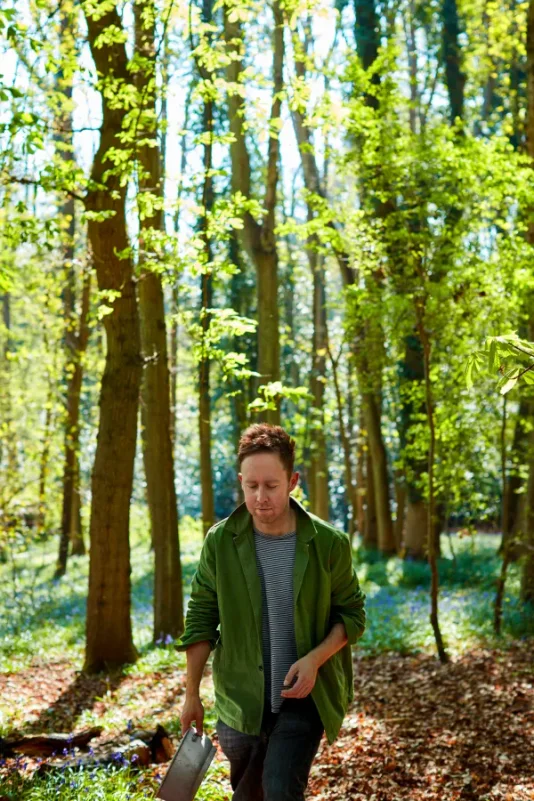
Foraging – Photography by Stuart Ovenden
Is foraging legal? What should you be mindful of?
Foraging is perfectly legal, but there are exceptions. One can collect the four Fs (flowers, foliage, fruit and fungi) for personal use, but it is against the law to uproot a wild plant in the UK without the landowner’s permission. Always pick with discretion and only ever take what you need – don’t over-harvest.
People often worry about the hazards of gathering wild food and one has to be clear from the outset – there are risks. There are plenty of leaves, flowers and berries out there that are easy to identify and taste delicious. Others, on the other hand, will leave you notably worse for wear (to put it lightly). Only eat a foraged plant or mushroom if it has been 100% positively identified – even then, try a little first and wait for 24 hrs, just in case you have an allergy or intolerance to the plant that has been hitherto unknown.
Where can you go foraging?
You can forage pretty much anywhere, but there are a couple of general guidelines. Try not to pick near busy roads where car exhaust fumes are an issue and if gathering along public footpaths, be mindful of areas that might be at – how can I put it, ‘Dog Lavatory Level’.
How can I use the plants I gather?
There are so many ways you can use the flowers and plants you forage. The most obvious one is for supplementing some of the ingredients in your food shop to add a fresh and zesty zing to your recipes.
But they’re also a great way to add uniqueness and personal touch to your flower arrangements, like the ones you can receive as part of our flower subscriptions.
What are some examples of good stems and foliages you can add to an arrangement during different times of the year?
The foliage you can gather varies depending on the time of year that you go foraging. Here are some of the most common blooms you can expect to find in Spring, Summer or Autumn.
Spring & Summer
1) Nettles
Nettles are a delicious and plentiful Spring harvest. Pick young leaves before the plant comes into flower; they are packed with vitamins and minerals and have many uses in the kitchen. Treat the leaves as you would spinach; they are great in homemade pasta, soups or whizzed into smoothies.

Nettle Pasta – Photography by Stuart Ovenden
2) Ramsons/Wild Garlic
Ramsons are a member of the allium family, which includes onions and garlic. Young leaves are the best in the kitchen – blitz them into pestos, flavoured butters and soups. Young flower buds are great pickled, while the flowers themselves make for a cheerful addition to a Spring salad. Find them in wet and shady woodland areas.
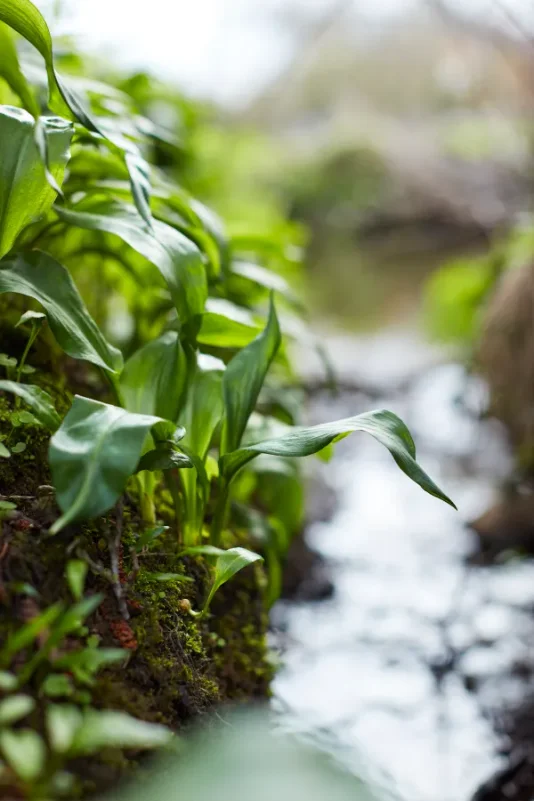
Ramsons – Photography by Stuart Ovenden
3) Dandelions
Dandelions are one of the first leaves to pick in Spring and they are easy to identify. They have a bitter note (a bit like Chicory) and work well with other leaves in a salad ensemble. Flower buds can be pickled and used like capers, while the flowers are also edible. Take care not to overdo it, as all parts of the plant are known to have diuretic properties.
4) Chickweed
Chickweed has an almost lettuce-like succulence and is fantastic in a sandwich, with roast beef being a particularly favourable pairing. A low growing annual, as with all wild plants, ensures that leaves are gathered from a clean, pollution-free area.
5) Sweet Violet
Sweet violets will have flowered long before many plants have even thought about stirring from their winter slumber. Flowers can be sprinkled over salads, or used to make flavoured sugars. The flavour of violet is distinct; if you’re unsure what to expect, head to the nearest sweet shop and pick up a roll of parma violet sweets. Young leaves are also edible.
6) Hairy bittercress
I’m convinced that Hairy Bittercress could do with a bit of an appellative makeover, as it is neither particularly hairy, nor particularly bitter. It is a common plant that can be found in many gardens, often in great profusion. The flavour of the leaves is like a cross between cress and rocket, and it is a worthy addition to any salad or sandwich.
7) Elderflower
Elderflower is the true taste of early summer. Flowers can be picked and used to make cordials and wines, or made into fritters by dipping freshly picked umbels in a light batter, deep-frying and dusting with sugar. Later on in the year, Elderberries are a valuable addition to the Autumn kitchen.
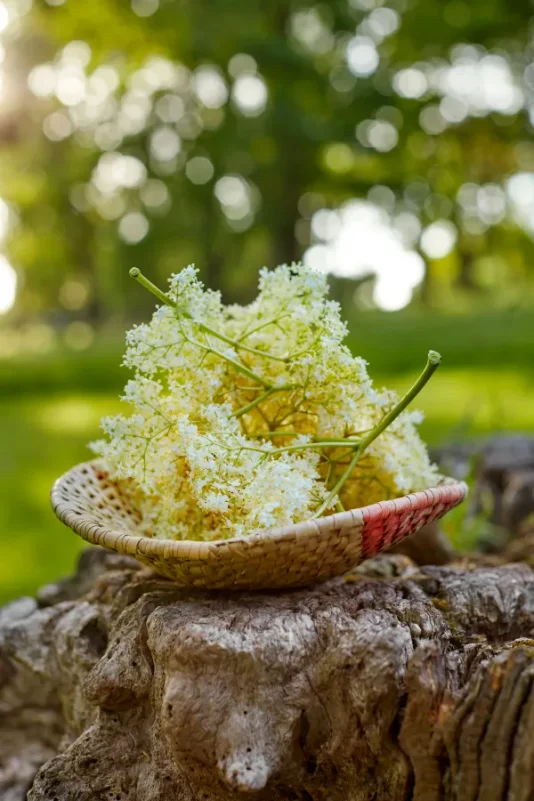
Elderflower – Photography by Stuart Ovenden
8) Primroses
Primrose flowers can be used to decorate cakes, infused into floral teas or scattered over salads. Pick with restraint, as they emerge at a time when many pollinators such as bees are emerging from hibernation and need all the sustenance that they can get.
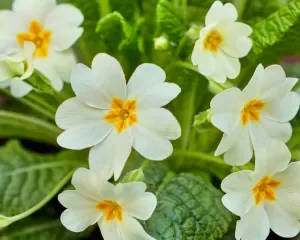
9) Garlic mustard
Also known as Jack-by-the-Hedge, Garlic mustard is a common plant that, although garlicky, isn’t related to garlic in any way. Young leaves have a spicy, mustardy note and are great in pestos, rostis and soups. Later on in the season, the seeds can be harvested and added to the spice cupboard.
10) Common sorrel
Common sorrel can be found in grassy hedge banks and on the fringes of meadows. Young leaves have a lemony, acidic pop – they contain oxalic acid which literally makes the mouth water. They are a great addition to soups, flavoured butters and salads.
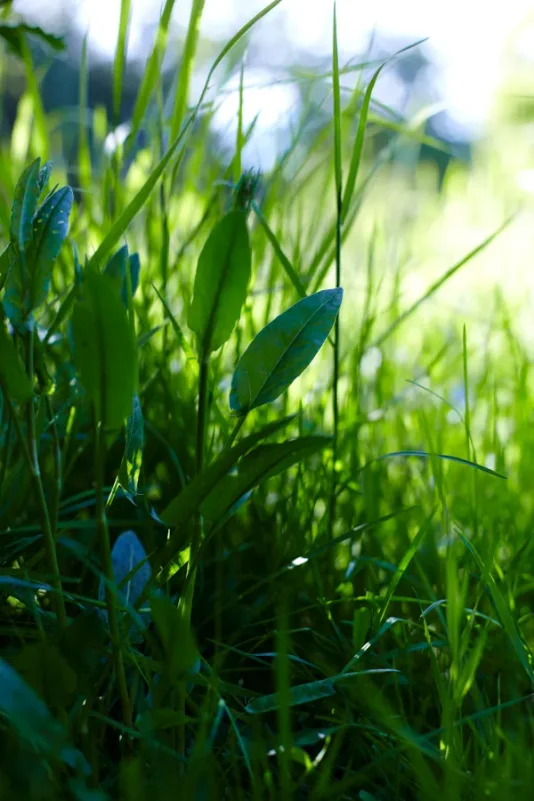
Common sorrel – Photography by Stuart Ovenden
Autumn
Autumn brings with it a whole new palette fresh to forage from. Reds, oranges and yellows can be added to arrangements as the leaves of Oak, Beech and Birch start to turn, while the stems of Bramble (Blackberries) and Dog Rose (Rosehips) are set with jewel-like berries that add texture and decadence.
Up next...
From fresh bud to long-lasting bloom
Our flowers are the freshest around, arriving in bud and opening to their full beauty at your home. Find out how you can make the most of your arrangement to enjoy it for up to two weeks or longer.
Celebrating our venture into the world of floral art
Celebrating Saatchi Gallery's exhibition Flowers - Flora in Contemporary Art & Culture, we're excited to present our very own large-scale floral art installation.
